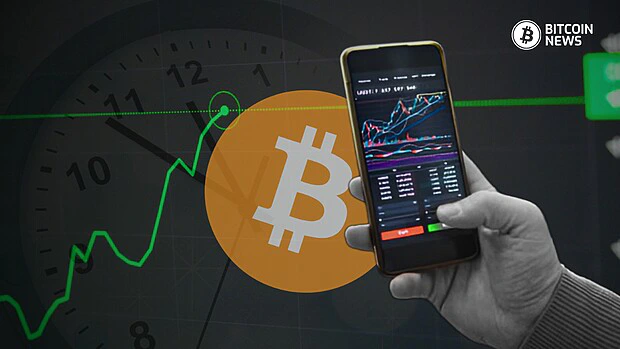The Bitcoin halving of April 2024 has now passed, and bitcoin is currently trading at around $67,000 as of October 21, 2024. This halving event marked the fourth in Bitcoin’s history and has proven to be a pivotal moment, setting the stage for its ongoing price journey.
Earlier this year, bitcoin hit a new all-time high of approximately $73,000 on March 13, just a month before the most recent halving.
This new high has reshaped the landscape of bitcoin’s price movements and opened new questions regarding how long it typically takes for it to reach its next peak after a halving event.
A Brief Overview of Bitcoin Halvings
Bitcoin halving events occur approximately every four years and are an essential feature of the Bitcoin’s protocol.
These events halve the block reward that miners receive for processing transactions, reducing the number of new bitcoin entering the market. With the April 2024 halving, the block reward dropped from 6.25 BTC to 3.125 BTC.
Historically, halvings have been followed by significant price increases, with bitcoin typically reaching its peak 12 to 18 months after each halving.
However, with the latest peak occurring just before the 2024 halving, some are wondering whether the market dynamics have shifted or if this is an early indication of even greater price increases.
Revisiting Bitcoin’s Halving History
1. The First Halving – November 28, 2012
The first halving reduced the block reward from 50 BTC to 25 BTC. At the time, bitcoin was trading at around $12.
Following the halving, it took approximately 367 days for bitcoin to reach its peak of around $1,100 in late November 2013. This period saw a massive price surge, laying the foundation for future halving expectations.
2. The Second Halving – July 9, 2016
During the second halving, the block reward was reduced from 25 BTC to 12.5 BTC. Leading up to this halving, bitcoin was priced around $650.
Approximately 525 days later, in December 2017, Bitcoin hit its peak of nearly $20,000, a 30-fold price increase. This halving further established the pattern of post-halving price surges.
3. The Third Halving – May 11, 2020
The third halving cut the block reward to 6.25 BTC. Before the event, bitcoin was trading at around $8,500.
Approximately 546 days later, in November 2021, bitcoin reached an all-time high of $69,000. This halving further solidified the trend of extended periods between halvings and peaks as Bitcoin matured as an asset.
What Changed in 2024?
Bitcoin’s price behavior in 2024 has shown some deviation from the established pattern.
On March 13, 2024, just one month before the halving, bitcoin reached a new all-time high of $73,000. This pre-halving peak came earlier than many anticipated, suggesting that investor sentiment and market conditions were particularly bullish leading up to the halving.
Several factors likely contributed to this early peak.
Growing institutional adoption as a result of Bitcoin ETFs approval, increasing global recognition of bitcoin as a store of value, and favorable macroeconomic conditions may have played significant roles in pushing bitcoin’s price to new heights.

Post-Halving Peak Expectations
Despite the peak of $73,000 in March 2024, history indicates that bitcoin may not have yet reached its ultimate peak for this cycle.
If the past is any guide, the typical pattern suggests that bitcoin’s highest price might occur 12 to 18 months after the halving, putting the next peak somewhere between mid-2025 and early 2026.
With bitcoin currently sitting at $67,200 as of October 2024, the coming months could see further growth. However, the exact timing and magnitude of the next peak remain uncertain, as market conditions and external factors continue to evolve.

Why Do Halvings Influence Peaks?
The key reason behind bitcoin’s post-halving peaks lies in the principle of supply and demand.
A halving reduces the rate of new bitcoin issuance, creating a supply shock. If demand remains constant or increases, the reduced supply typically leads to upward pressure on the price. This fundamental economic dynamic has been at play during each of the past three halving cycles.
However, halvings also garner widespread attention within the Bitcoin community and beyond. This publicity often draws new participants to the market, creating additional demand and reinforcing the pattern of price appreciation in the months following a halving.
Factors That Could Impact the Post-2024 Halving Cycle
- Institutional Adoption: As more institutional investors enter the market, bitcoin’s price movements may become more stable and driven by long-term growth rather than short-term speculation. This trend could lead to a more extended and gradual post-halving peak.
- Macroeconomic Factors: Global economic conditions, including inflation, interest rates, and geopolitical events, can significantly impact bitcoin’s price trajectory. If bitcoin continues to be seen as a hedge against economic instability, demand may rise.
- Regulatory Environment: Governments and regulatory bodies around the world continue to shape the landscape for Bitcoin. Favorable regulations could encourage greater adoption, while restrictive measures could have the opposite effect.
How this regulatory landscape evolves will play a key role in determining bitcoin’s price path. - Technological Developments: Improvements to the Bitcoin network, such as the growth of the Lightning Network and other scalability solutions, could drive increased adoption and higher demand for bitcoin.
New technological advancements could also introduce new use cases, further boosting Bitcoin’s appeal.
Conclusion
The April 2024 halving is still shaping the market, with bitcoin currently trading around $67,200 and having reached an all-time high of $73,000 in March 2024.
While this pre-halving peak deviated slightly from historical patterns, it doesn’t necessarily preclude a future peak in the months to come. If bitcoin’s previous post-halving trends hold, the next significant price surge could occur between mid-2025 and early 2026.
As always, while halvings provide a valuable framework for understanding bitcoin’s price movements, external factors such as institutional interest, macroeconomic conditions, regulatory developments, and technological advancements all play crucial roles.
How these elements interact with Bitcoin’s built-in scarcity will ultimately determine the timing and scale of the next peak.










